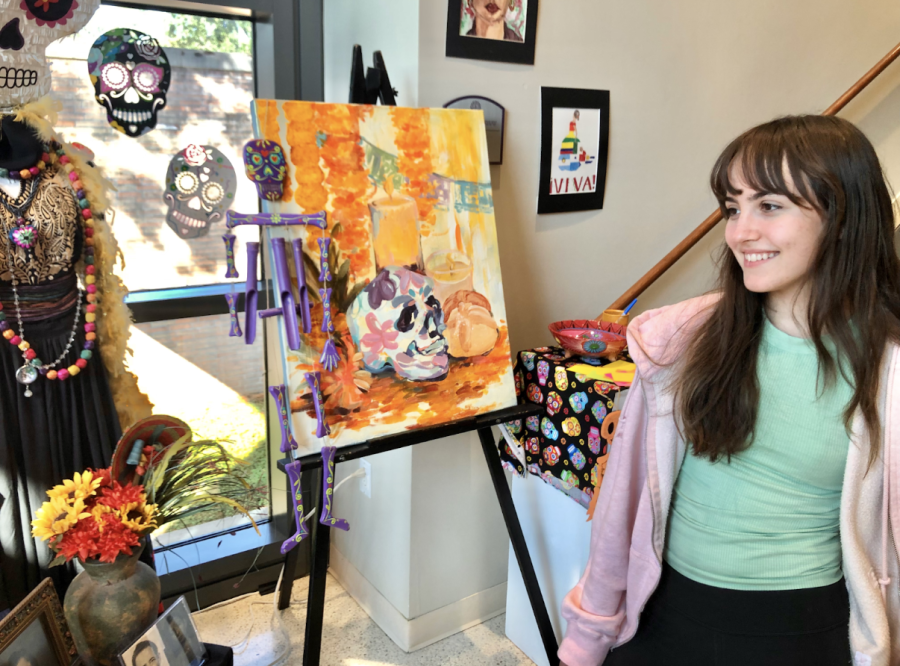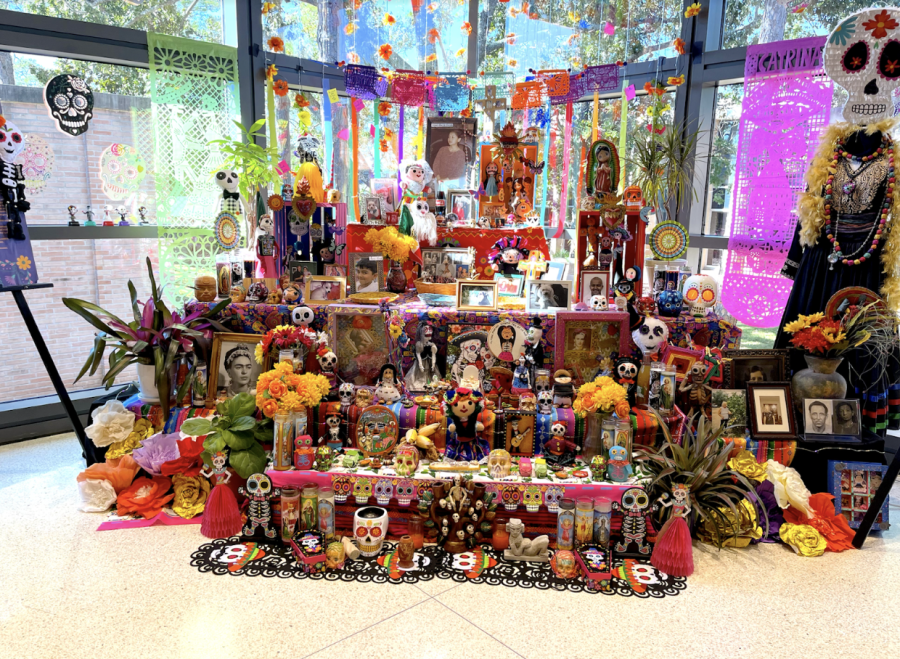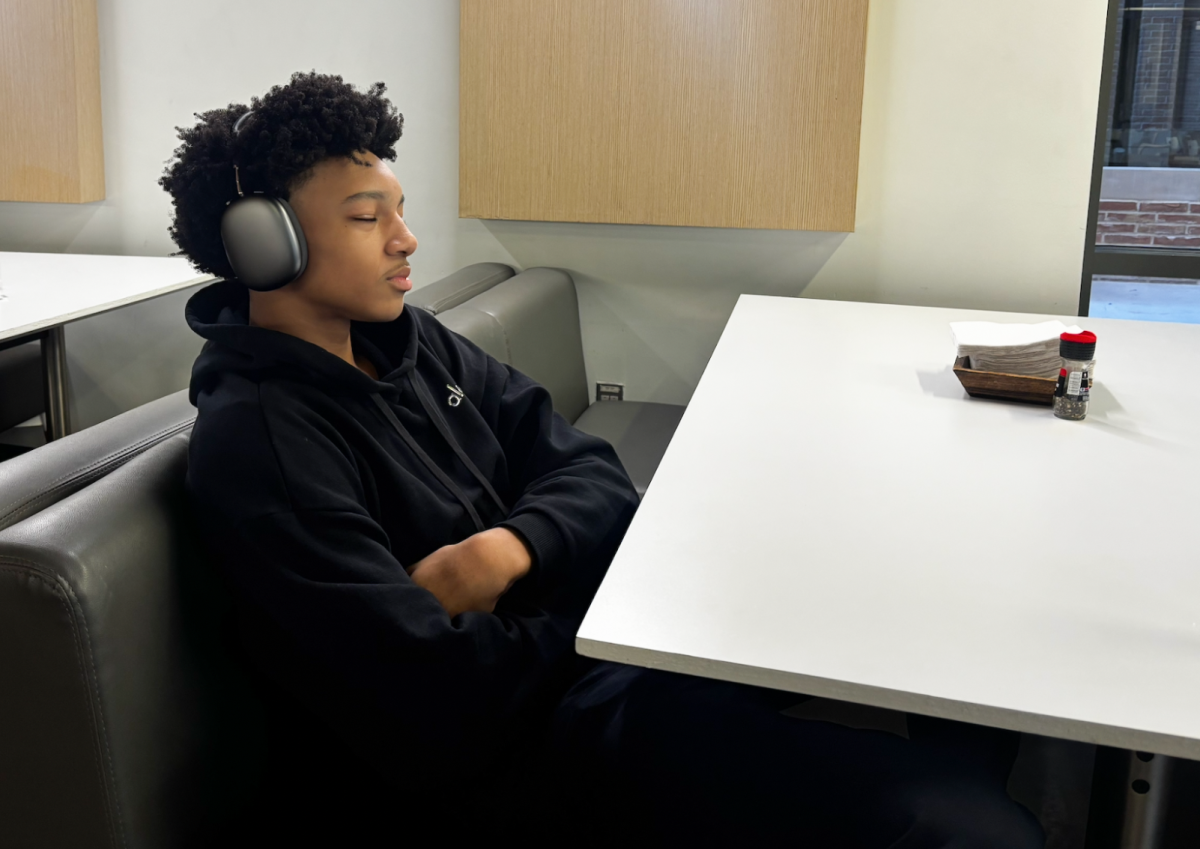Day of the Dead celebrated on campus
Sophomore Cami Culbertson admires the “ofrenda” on campus.
November 4, 2022
A Lower School student and administrator stand side by side as they write notes to place on the Day of the Dead “ofrenda”, or altar, in the Student Life Building. Members of the school community have been celebrating the triumph of love over death by writing messages on the “ofrenda.”
“Some of them are so full of love and also very touching,” Upper School Spanish teacher Ms. Vanessa Zamudio-Lara said. “You see people from fourth grade writing to their dogs or adults writing to a family member who already passed.”
“Día de Los Muertos,” or the Day of the Dead, has been a celebration of life for thousands of years. The day honors the dead and celebrates the lives of loved ones. Across Mexico and in the diaspora, people remember and celebrate the lives of their ancestors with an “ofrenda” from Oct. 31 to Nov. 2.
Ms. Zamudio-Lara said many aspects of traditional indigenous culture, such as using marigold flowers and skulls, are presented in “ofrendas” today and are native to Mexico. However, many new aspects have developed over time including portraits, candles, and “papel picado” or colored tissue paper with cut-out designs like the ones displayed on the “ofrenda” on campus.
Ms. Zamudio-Lara said the “ofrenda” is meant to create an authentic representation of indigenous culture.
She said her inspiration when constructing this presentation was her grandparents and ancestors.
“Three out of four of my grandparents are indigenous, so because of that, it is something that I have done my whole life,” she said, “I used to do it and I do it at home and at the cemetery, too. So, I think I tried to be as authentic as I can while trying to respect what I have learned from my ancestors.”
Ms. Zamudio also wanted to make the altar completely interactive.
“The ribbons with the messages are something that in Mexican tradition, doesn’t exist,” she said. “Normally, instead of having messages, people will bring personal items. I tried to adapt what I have learned from my ancestors to what we have here, so everybody can be welcome to participate.”
Even though the ribbons are new, some decorations were displayed on and around the altar this year and in previous years.
“This is my 18th year at Kinkaid, So these decorations have been with me for a long, long time,” Ms. Zamudio said. “Every year, I try to add at least one more element. And that’s how I have so many.”
A traditional dress is displayed beside the altar. Ms. Zamudio said it is common for people to wear their traditional outfits during the commemoration.
“It’s a representation of the old and the new,” she said. “It’s one more element that adds authenticity.”
The painting shown beside the display was created by alumna Sofia Liu, and it is also a representation of certain cultural elements.
“The painting portrays some of the most representative elements of the Day of the Dead: “pan de muerto” or bread of the dead and “calaveras de azúcar” or sugar skulls,” Ms. Zamudio said.















